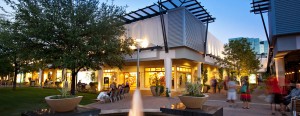Share This
Related Posts
Tags
Millennial Myths
By Paul Rosta on Jul 17, 2014 in News
The 77 million Americans that constitute the Millennial generation are attracting plenty of attention. A generation that already wields hundreds of billions of dollars’ worth of buying power, these young adults represent a huge rental and employment base, as well as a strong and growing contribu tor to the retail sector. Thus, developers, investors, advisers and other real estate professionals are paying close attention to their very distinctive characteristics and particular preferences.
tor to the retail sector. Thus, developers, investors, advisers and other real estate professionals are paying close attention to their very distinctive characteristics and particular preferences.
While much has been made of these traits, some assumptions about Millennial retail habits should be taken with a grain of salt, according to research by The Nielsen Co., which partnered with Commercial Property Executive to examine both Millennial buying preferences and the geographic locations attracting the largest populations of Millennials with the greatest buying power.
A common myth is that they are primarily an urban phenomenon. There is no doubt that younger Americans have been a catalyst for reviving the urban core. As Nielsen’s research shows, New York City, Boston, Washington, D.C., Seattle, Austin and San Francisco all figure prominently among the cities most popular with Millennials. Cities offer much that they find appealing: job opportunities, a fast-paced lifestyle, cultural variety and, in many places, the convenience of getting around without owning a car.
Yet markets rich in Millennial shoppers are often found not only in the urban core but in counties that radiate outside of those big cities. And although coastal markets are popular with Millennials, centers of education, technology and state government in the nation’s Heartland are also good bets.
Another anomaly is that, for all their embrace of technology, the Millennials show no sign of giving up on brick and mortar. Moreover, centers that offer a variety of local retailers often compete strongly for the 20-to-37 age group. Take The Union at Biltmore Fashion Mall (pictured, above right) in Phoenix: It has built a solid following among young adults, in part by emphasizing distinctive, home-grown retailers rather than national chain stores. Entertainment options and a variety of fast casual and quick-service restaurants are part of the mix.
Retailers that are adapting to Millennials’ preferences are finding success. In apparel, which is particularly subject to swift changes in consumer tastes, brands like Uniqlo and Forever 21 maintain their popularity with young shoppers in part by keeping their inventories fresh. Adapting tenant lineups to increase appeal to Millennials is a much more subtle process that evolves by years rather than by seasons, but it needs to be on the radar.
Millennial tastes are also influencing the restaurant sector, which is opening more new stores by a wide margin than any other retail category right now. As in other areas, fast-casual dining shows a distinct generational flavor. Nielsen research suggests that centers competing in markets with a strong Millennial presence might do well to bring in one or more of their favorite quick-service chains: Starbucks, Quiznos, Panera Bread, Chipotle and Chick-Fil-A. Those brands are also favorites among the slightly older members of Generation X, those born from the mid-1960s to mid-1970s. By contrast, tastes of Baby Boomers and the Greatest Generation run to brands like KFC, Boston Market, Arby’s and White Castle.
At the grocery store, freshness, selection and prices are no less important to younger customers than they are to their elders. But Millennials’ impatient streak puts a premium on speedy service. Centers whose tenants have figured out how to make things snappy have added investment appeal in Millennial strongholds, and retailers who can cater to those needs should also be a significant part of the mix. Kroger Co. is a standout. Mobile apps allow the customer to check on product availability and pricing during a store visit, a capability of particular appeal to Millennials. The grocery store chain also introduced QueVision, a proprietary system that uses infrared sensors and predictive analytics to manage the availability of cash registers. QueVision enabled Kroger to trim the average time shoppers wait on the checkout line from four minutes to 30 seconds.
But a technology-friendly environment is not the only quality attracting younger shoppers. Phillips Edison recently invested in a suburban Chicago center where Millennials are strongly represented. Anchoring the center is a Trader Joe’s, which embodies much of what younger consumers tend to prefer: seemingly endless variety, an appealingly offbeat selection of products, a subtly hip atmosphere and, no less important, competitive prices. For an upscale chain like Whole Foods, Millennials pose a compelling long-term challenge. Although the chain is a frequent anchor of choice for investors, it remains relatively small, with only a few hundred stores nationwide. For Whole Foods, the long-term question will be how widely and how quickly to expand.
Further discussion on the Millennials and extensive data from Nielsen about the markets where they wield the most influence are available in “Millennial Magnets,” part of the Retail Special Focus in the May 2014 issue of Commercial Property Executive. CPE senior editor Paul Rosta partners with Nielsen annually to identify and report on specific demographic trends shaping retail real estate strategies.
